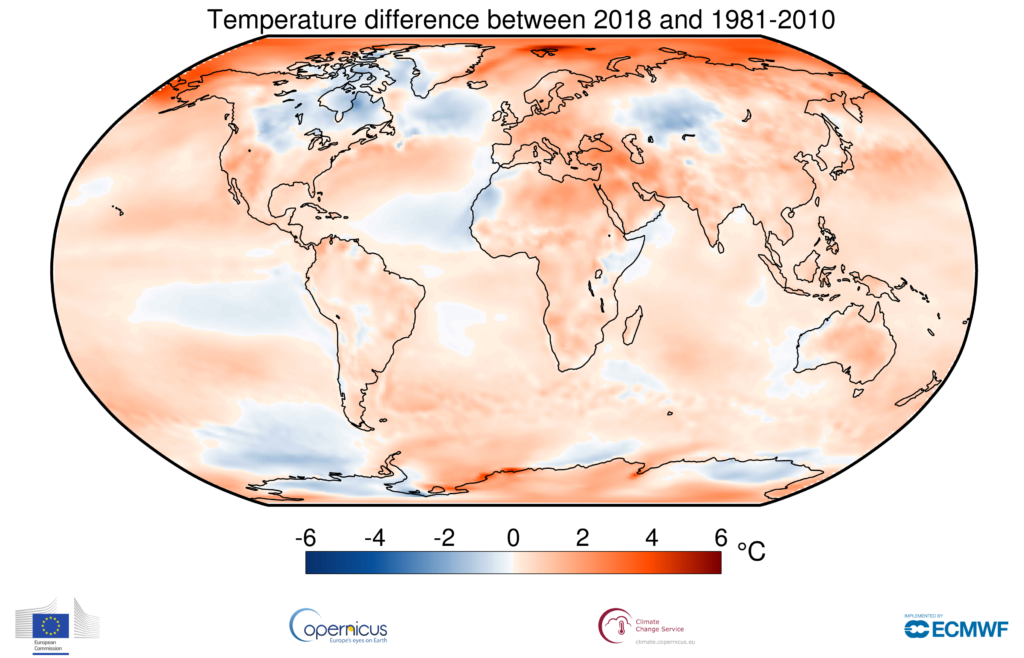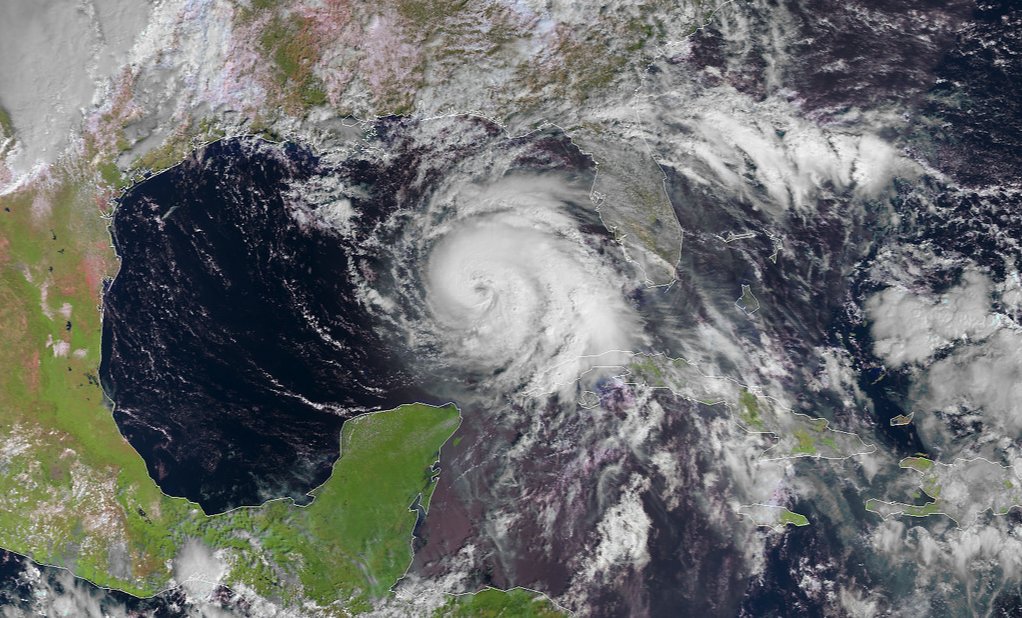Extreme weather in 2018
The year 2018 was the fourth warmest year on record, with a global average surface air temperature of 14.7°C as shown by the data from Copernicus Climate Change Service (C3S). The last five years were on average 1.1°C higher than pre-industrial levels. Furthermore, the year 2018 was also the fourth costliest year since 1980 for insured losses due to natural hazards according to Munich RE. The total losses due to natural hazards were estimated at $160 billion, of which 78% had a meteorological or climatological cause.
Although parts of Canada, Kazakhstan, the Antarctic and the oceans were cooler than the 1981-2010 average, most parts of the globe experienced higher surface air temperatures than in 1981-2010. In particular the Arctic, Europe, the Middle East and parts of Antarctica experienced temperatures that were more than 2°C higher than the long-term average. Together with the high temperatures, the CO2 levels have continued to rise in 2018 to an annual average column-averaged CO2 concentration of 406.7 ppm. Just after the year finished, the CO2 concentration at Mauna Loa reached a record high daily CO2 concentration of 413.45 ppm on the 12th of January 2019.

Surface air temperature anomaly for 2018 relative to the average for 1981-2010 (Source: Copernicus Climate Change Service, ECMWF)
Apart from the extremely high temperatures and CO2 concentrations, the year 2018 contained a large number of extreme events. Most of the events with the highest losses were weather related and occurred during the second half of the year. The tropical cyclones Florence, Michael (Northern America) and Jebi (Japan) are listed in the top 5 costliest natural events of last year. Other weather or climatic events that caused high losses were flood events in Nigeria and Kenya and a large hailstorm in Australia.
Large parts of Europe look back at a year with drought. The northern part of Europe experienced a hot and dry summer. The southern part of the continent, however, experienced a wetter year than the 1981-2010 average. In the Netherlands, 2018 was an extreme weather year, with many records broken. It was one of the driest years ever measured in The Netherlands and the amount of sunshine hours was the second most measured since 1901. The year also accounted for the highest number of warm days (maximum temperature above 20°C) since the measurements started.
After an extreme 2017, the year 2018 again ends up as a year with a lot of extremes. As the climate is changing, it is important to keep the impact as small as possible. By informing our clients about extreme weather events, they are able to take precautions and reduce the impact of such events.


